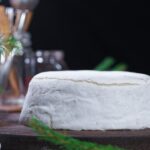Caramel cake decorations add a touch of elegance and sophistication to any dessert, making them a popular choice for special occasions and celebrations. In this article, we will guide you through the art of creating stunning caramel cake decorations, from basic techniques to advanced designs. Learn how to make caramel cake decorations that will impress your guests and elevate your baking skills.
Caramel is not only delicious but also versatile when it comes to decorating cakes. Whether you want to drizzle, mold, or shape caramel into intricate designs, the possibilities are endless. In the following sections, we will delve into the fundamentals of making caramel for cake decorations, outlining the tools and ingredients you’ll need for success. With our detailed guide and helpful tips, you’ll be able to master the art of working with caramel like a pro.
From classic swirls to modern abstract patterns, caramel decorations can enhance the visual appeal of any cake. Whether you’re a beginner or an experienced baker, incorporating caramel decorations into your creations can add a unique flair and personal touch.
Stay tuned as we explore different techniques for creating stunning caramel cake decorations and provide creative ideas for incorporating them into various cake designs. Get ready to take your baking skills to the next level with our step-by-step instructions on how to make caramel cake decorations that are sure to wow your guests.
The Basics of Making Caramel
Understanding the Caramelization Process
Caramel is made by heating sugar until it melts and turns into a rich golden-brown liquid. The process of caramelization involves breaking down the sugar molecules, leading to the characteristic flavor and color of caramel. It’s important to monitor the temperature carefully to prevent burning, as this can result in a bitter taste. The key is to heat the sugar slowly and steadily until it reaches the desired color.
Choosing the Right Sugar
When making caramel for cake decorations, it’s essential to use the right type of sugar. While granulated white sugar is commonly used, you can experiment with other sugars like brown sugar or even maple syrup for different flavor profiles. Each type of sugar will yield slightly different results in terms of color and taste, so feel free to explore and find your favorite.
Tips for Making Perfect Caramel
To ensure your caramel turns out perfectly every time, there are a few tips you can follow. First, make sure your pan is clean and dry before starting. Any impurities or water can cause the sugar to crystallize instead of melting smoothly.
Additionally, resist the temptation to stir the sugar while it’s melting – instead, gently swirl the pan to distribute the heat evenly. Finally, have all your tools and ingredients ready before you start, as caramel can quickly go from perfect to burnt if left unattended.
By following these steps and experimenting with different sugars and techniques, you’ll be able to create stunning caramel cake decorations that will impress your friends and family. Whether you’re drizzling caramel over a classic vanilla cake or shaping intricate designs for a special occasion cake, mastering the art of caramel decoration will take your baking skills to the next level. So don’t be afraid to get creative and have fun with this delicious decorating technique.
Tools and Ingredients You’ll Need
When it comes to creating stunning caramel cake decorations, having the right tools and ingredients is crucial. To achieve professional-looking results, there are a few key items that you’ll need to have on hand. Here is a list of essential tools and ingredients for making caramel cake decorations:
First and foremost, you will need granulated sugar to make the caramel itself. This is the base ingredient for creating that sweet and rich caramel flavor that we all love. Additionally, having some water on hand is important for controlling the process of caramelization and ensuring that the sugar doesn’t burn.
A heavy-bottomed saucepan is also necessary for making caramel. The heavy bottom helps distribute heat evenly, preventing hot spots that can cause the sugar to burn. A whisk or wooden spoon will be needed to stir the sugar as it melts and prevent clumping.
Another important tool for making caramel decorations is a candy thermometer. This will help you monitor the temperature of the sugar as it cooks, ensuring that it reaches the desired consistency for your decorations. Additionally, having parchment paper or a silicone mat for shaping and cooling your caramel decorations is essential.
Lastly, if you want to get creative with your caramel cake decorations, consider investing in molds or cookie cutters in various shapes and sizes. These tools will allow you to create intricate designs and unique shapes for decorating your cakes. With these essential tools and ingredients in hand, you’ll be well-equipped to start creating beautiful caramel cake decorations in no time.
By having all these tools and ingredients ready before starting your caramel cake decoration project, you can ensure a smooth process from start to finish. Whether you’re a beginner or a seasoned baker, following this list will help you create incredible caramel decorations that will elevate any cake design. Experiment with different techniques and shapes to discover what works best for your style and taste preferences when making homemade caramel cake decorations.
Tips for Success
When it comes to creating caramel cake decorations, there are a few key tips and tricks that can help ensure your creations turn out perfectly every time. Here are some helpful tips to keep in mind as you embark on your caramel decoration journey:
- Use a heavy-bottomed saucepan: When making caramel for decorations, using a heavy-bottomed saucepan can help prevent hot spots and ensure even heating throughout the cooking process.
- Choose the right temperature: One of the most important factors in successful caramel making is getting the temperature just right. Invest in a reliable candy thermometer to monitor the temperature accurately.
- Be patient: Making caramel requires patience and attention to detail. Avoid the temptation to stir constantly as this can cause crystallization. Instead, swirl the pan gently to ensure even melting and cooking.
In addition to these tips, it’s important to remember that practice makes perfect when it comes to mastering the art of caramel decorations. Don’t get discouraged if your first attempts aren’t exactly as you envisioned – with time and practice, you’ll soon be creating stunning caramel decorations for your cakes.
- Let the caramel cool slightly before decorating: For more intricate designs or shapes, allow the caramel mixture to cool slightly before attempting to mold or shape it. This will make it easier to handle and work with.
- Store in a cool, dry place: Once you’ve created your caramel decorations, store them in a cool, dry place until you’re ready to use them. Excessive heat or humidity can cause the decorations to soften or lose their shape.
- Experiment with different flavors and colors: Don’t be afraid to get creative with your caramel decorations. You can add flavorings like vanilla extract or food coloring to customize the look and taste of your creations.
By keeping these tips in mind and allowing yourself room for experimentation and creativity, you’ll soon become adept at making beautiful and delicious caramel cake decorations that will impress guests and elevate your baked goods to new heights.
Different Techniques for Creating Caramel Decorations
Caramel cake decorations are a delicious and elegant way to elevate the look of your cakes. There are various techniques that you can use to create stunning caramel decorations that will impress your guests.
One popular method is drizzling caramel over the cake surface, creating beautiful patterns and designs that add a touch of sophistication. To do this, simply melt the caramel until it reaches the desired consistency and then use a spoon or piping bag to drizzle it over the cake.
Another creative technique for making caramel decorations is molding the caramel into shapes or figures to place on top of the cake. This allows you to customize your decorations and add a personal touch to your baked creations. To mold caramel, pour the melted caramel into silicone molds or shape it by hand before it hardens. Once the caramel has set, carefully remove it from the mold and place it on top of your cake for a unique finishing touch.
Shaping caramel decorations is another fun way to add flair to your cakes. By using tools like cookie cutters or free-hand cutting, you can create intricate shapes such as flowers, hearts, or swirls with the hardened caramel. Experimenting with different shapes and sizes can help you achieve a variety of looks for your cake decorations. Whether you’re drizzling, molding, or shaping caramel for cakes, these techniques offer endless possibilities for creating eye-catching and flavorful decorations.
| Technique | Description |
|---|---|
| Drizzling | Melted caramel is poured over cakes in patterns or designs. |
| Molding | Caramel is poured into molds or shaped by hand before setting. |
| Shaping | Caramel is cut into various shapes using tools like cookie cutters. |
Incorporating Caramel Decorations Into Different Cake Designs
Caramel decorations offer a delicious and visually appealing way to enhance the presentation of your cakes. Whether you are looking to add a touch of elegance to a classic design or create a modern show-stopper, caramel can be a versatile and impressive option for cake decoration. Below are some creative ideas for incorporating caramel decorations into different cake designs:
- Drizzling: One simple yet effective way to incorporate caramel into your cake design is by drizzling it over the top of the cake. This can create a beautiful marbled effect or elegant swirls that add both flavor and visual interest.
- Molding: Use molds or cookie cutters to create intricate shapes out of caramel, such as flowers, hearts, or other designs. These molded caramel pieces can then be strategically placed on the cake for a stunning decorative element.
- Shaping: Get creative with shaping caramel into three-dimensional elements like bows, ribbons, or geometric shapes. These uniquely shaped caramel decorations can add a modern and artistic touch to any cake design.
By incorporating these different techniques for creating caramel decorations, you can elevate the presentation of your cakes and impress your guests with both the taste and visual appeal. Experiment with various methods and designs to find the perfect combination that complements your overall cake theme and style.
Remember, practice makes perfect when it comes to working with caramel for cake decorations. Don’t be afraid to experiment and try out new ideas to see what works best for your specific cake designs. With patience, creativity, and attention to detail, you can master the art of making stunning caramel decorations that will take your cakes to the next level.
Troubleshooting Common Issues
When it comes to making caramel cake decorations, there may be some common issues that could arise during the process. One of the most frequent problems is crystallization, where sugar crystals form in the caramel mixture and create a gritty texture. To prevent this, make sure not to stir the caramel too much while it’s cooking and use a pastry brush dipped in water to wash down any sugar crystals on the sides of the pan.
Another issue that may occur is burning the caramel, which can happen if you cook it at too high of a temperature or for too long. To avoid this, keep a close eye on your caramel as it cooks and use a candy thermometer to monitor the temperature. If you do end up burning your caramel, don’t worry. You can salvage it by transferring it to a new pot without scraping the burnt bits from the bottom.
Additionally, if your caramel decorations are not setting properly or are too runny, it could be due to undercooking the sugar mixture. Make sure to follow the recipe instructions carefully and reach the appropriate temperature for your desired consistency.
If your caramel is too thick, you can simply heat it up slightly before using it for decorations. By being mindful of these common problems and following these troubleshooting tips, you’ll be able to create beautiful and delicious caramel cake decorations with ease.
| Common Issue | How to Fix It |
|---|---|
| Crystallization | Avoid stirring too much and wash down sugar crystals with a wet pastry brush. |
| Burning | Monitor temperature closely and transfer burnt mixture to a new pot without scraping. |
| Setting Issues | Cook sugar mixture thoroughly according to recipe instructions; reheat if too thick. |
Caramel Cake Decoration Gallery
One of the most delightful aspects of decorating cakes with caramel is the endless creative possibilities it offers. From elegant drizzles to intricate shapes and designs, caramel can elevate any cake from ordinary to extraordinary. By showcasing stunning examples of caramel cake decorations, you can draw inspiration and ideas for your own confectionery masterpieces.
When it comes to caramel cake decorations, one popular technique is creating delicate sugar cages or spirals. These intricate designs are made by carefully drizzling melted caramel in a continuous motion over a greased surface, allowing it to cool and harden into beautiful shapes that can adorn the top of a cake or dessert.
Another visually striking option is caramel shards, which are created by pouring hot caramel onto a baking sheet and letting it cool until it forms thin, brittle pieces that can be arranged artistically on top of a cake.
For those looking to add a touch of elegance to their cakes, consider using caramel ribbons or loops as decorations. These eye-catching embellishments are made by gently pulling cooled caramel into long, thin strands and then twisting them into desired shapes.
Whether cascading down the sides of a tiered cake or wrapping around individual slices, caramel ribbons are sure to impress your guests with their delicate beauty. Experiment with different shapes and sizes to create unique designs that perfectly complement your chosen cake style.
Conclusion
In conclusion, caramel cake decorations add a touch of elegance and sophistication to any dessert. The versatility of caramel allows for endless creative possibilities, making it a must-have skill for any aspiring baker. By mastering the art of making caramel and learning different techniques for creating stunning decorations, you can elevate your cakes to a whole new level.
If you’re ready to embark on the delicious journey of making caramel cake decorations, remember to start with the basics of making caramel using the right tools and ingredients. Pay attention to the temperature and consistency of the caramel to achieve perfect results every time. Utilize helpful tips and tricks to troubleshoot common issues that may arise during the process.
Whether you choose to drizzle, mold, or shape your caramel decorations, let your imagination run wild as you incorporate them into different cake designs. From simple swirls to intricate patterns, caramel decorations can truly transform a plain cake into a work of art. So go ahead and experiment with different techniques, mix up various flavors, and create your own unique caramel cake decorations that will impress both your taste buds and your guests. Happy baking.
Frequently Asked Questions
How Do You Melt Caramel for Decorations?
The key to melting caramel for decorations is to do it slowly and gently. You can either use a double boiler or a microwave, making sure to stir frequently to prevent burning. Once the caramel is smooth and runny, you can drizzle or pipe it onto your desserts for decoration.
How Long Do Caramel Decorations Last?
Caramel decorations can last for a decent amount of time if stored properly. When kept in an airtight container at room temperature, they can stay fresh for up to 2 weeks. However, be aware that humidity can cause them to become sticky or lose their shape more quickly.
How to Make Sugar Decorations for Cakes?
Making sugar decorations for cakes involves mixing sugar with water and heating it until it reaches the hard crack stage on a candy thermometer. Then, you can pour the hot syrup onto a silicone mat and let it cool before breaking it into pieces or shaping it into designs. These sugar decorations add an elegant touch to cakes and desserts.

Welcome to my blog about home and family. This blog is a place where I will share my thoughts, ideas, and experiences related to these important topics. I am a stay-at-home mom with two young children. I hope you enjoy reading it! and may find some helpful tips and ideas that will make your home and family life even better!





